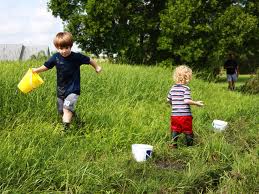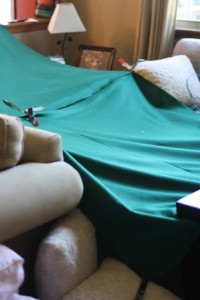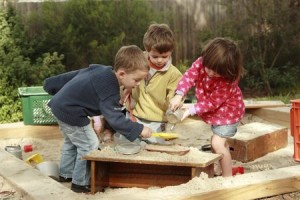“Too little playtime may seem to rank far down on the list of society’s worries, but the scientists, psychologists, educators and others who are part of the play movement say that most of the social and intellectual skills one needs to succeed in life and work are first developed through childhood play. Children learn to control their impulses through games like Simon Says, play advocates believe, and they learn to solve problems, negotiate, think creatively and work as a team when they dig together in a sandbox or build a fort with sofa cushions.” (read the article)
Isn’t that an interesting quote! Of course I have written about this very important subject, Encouraging creativity and creative thinking in children, a number of times, however, it never ceases to amaze me that I have to write about it at all. It is a very different world from the one I grew up in, in the 1950’s.( Want to get kids into college? Let them play).

Most of the social and intellectual skills one needs to succeed in life and work are first developed through childhood play.
So, how were children raised in the 1950’s. Of course, I went to public school but when I got home we played, a lot. We played on Saturday. Cartoons lasted only until about 10am on Saturday but we didn’t always watch them, especially in the summer. After all, the fort was calling. We had no video movies, no video games, no Xbox, no MP3 players, no computer. Play was what we did. Play was importance and that had its own benefits.
I want to share some more information from this article with you because I hope we are not part of the vanishing of play in America!
“For several years, studies and statistics have been mounting that suggest the culture of play in the United States is vanishing. Children spend far too much time in front of a screen, educators and parents lament — 7 hours 38 minutes a day on average, according to a survey by the Kaiser Family Foundation last year.”
What is the reason for this reduced play in children? “Behind the numbers is adult behavior as well as children’s: Parents furiously tapping on their BlackBerrys in the living room, too stressed by work demands to tolerate noisy games in the background. Weekends consumed by soccer, lacrosse and other sports leagues, all organized and directed by parents. The full slate of lessons (chess, tae kwon do, Chinese, you name it) and homework beginning in the earliest grades.”
Sarah Wilson visited the kindergarten her child would attend in a few months. What she found was a row of computers and small desks. She was appalled. She remembered the sandbox, blocks and toys in her own kindergarten class in 1985. Gee, we don’t even have to go back to the 50’s to find play!
“There’s no imaginative play anymore, no pretend,” Ms. Wilson said with a sigh.

"Children learn to think creatively and work as a team when they dig together in a sandbox or build a fort with sofa cushions.”
So her children are home and her home is messy. She has decided to embrace the sometimes untidiness of her children’s play.
It is important to understand the benefits and importance of childhood play,especially pretend play and imaginative play for children. “When I was growing up, there was a culture of childhood that children maintained,” said Jim Hunn, vice president for mass action at KaBOOM, a nonprofit group that is a leading voice in reducing what it terms the “play deficit.” He learned how to play games from other children.
That is how we did it in my day. We played in groups of mixed ages, often siblings, teaching one another. No adults. No rules. No interruptions, except for the call to dinner. We knew how to play and we were allowed to do it. We had space and time.
Possibly Related Posts:
- Self Care for Better Parenting – Part 2
- Self Care for Better Parenting – Part 1
- Got Kids 24/7 – 2 Tips to make life easier
- The Screen Free Experiment
- 5 Tips to Put Family first





{ 0 comments… add one now }